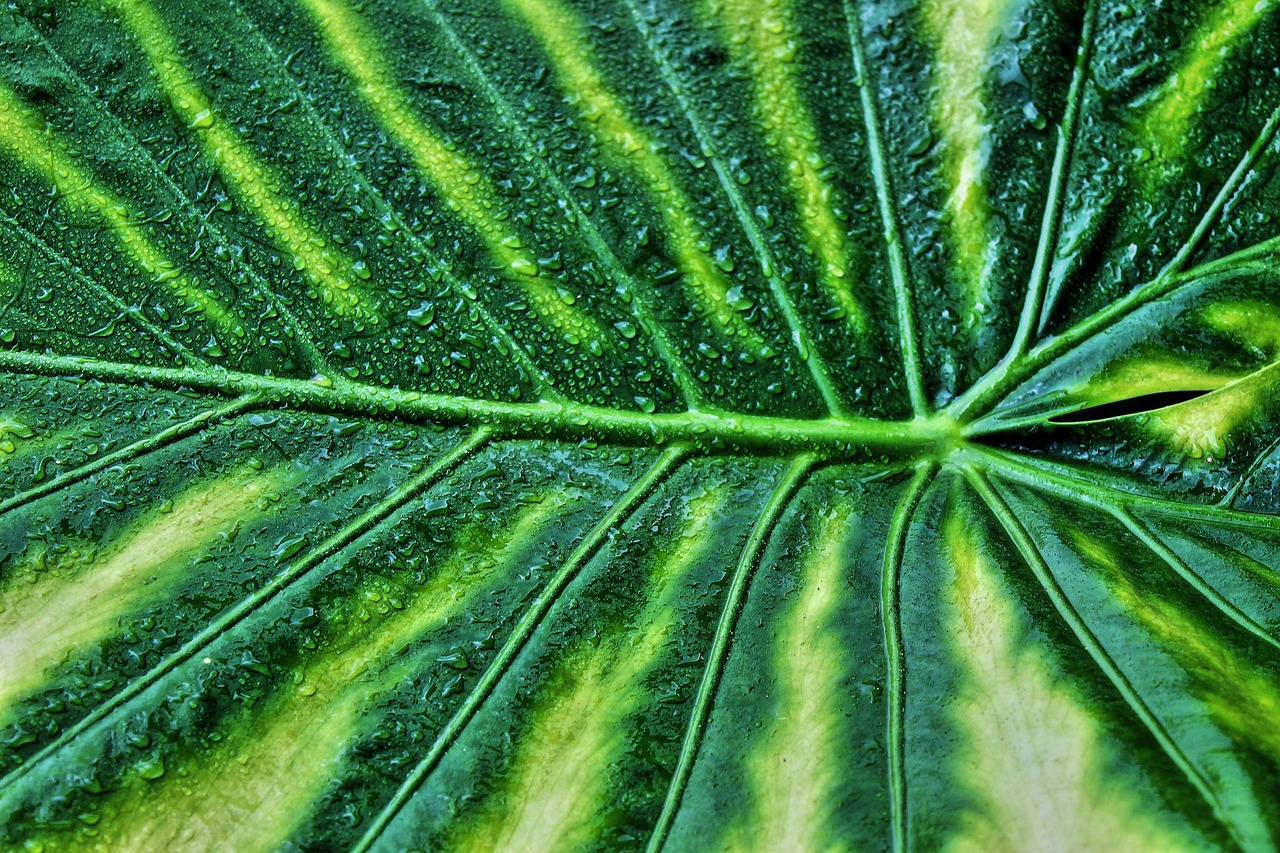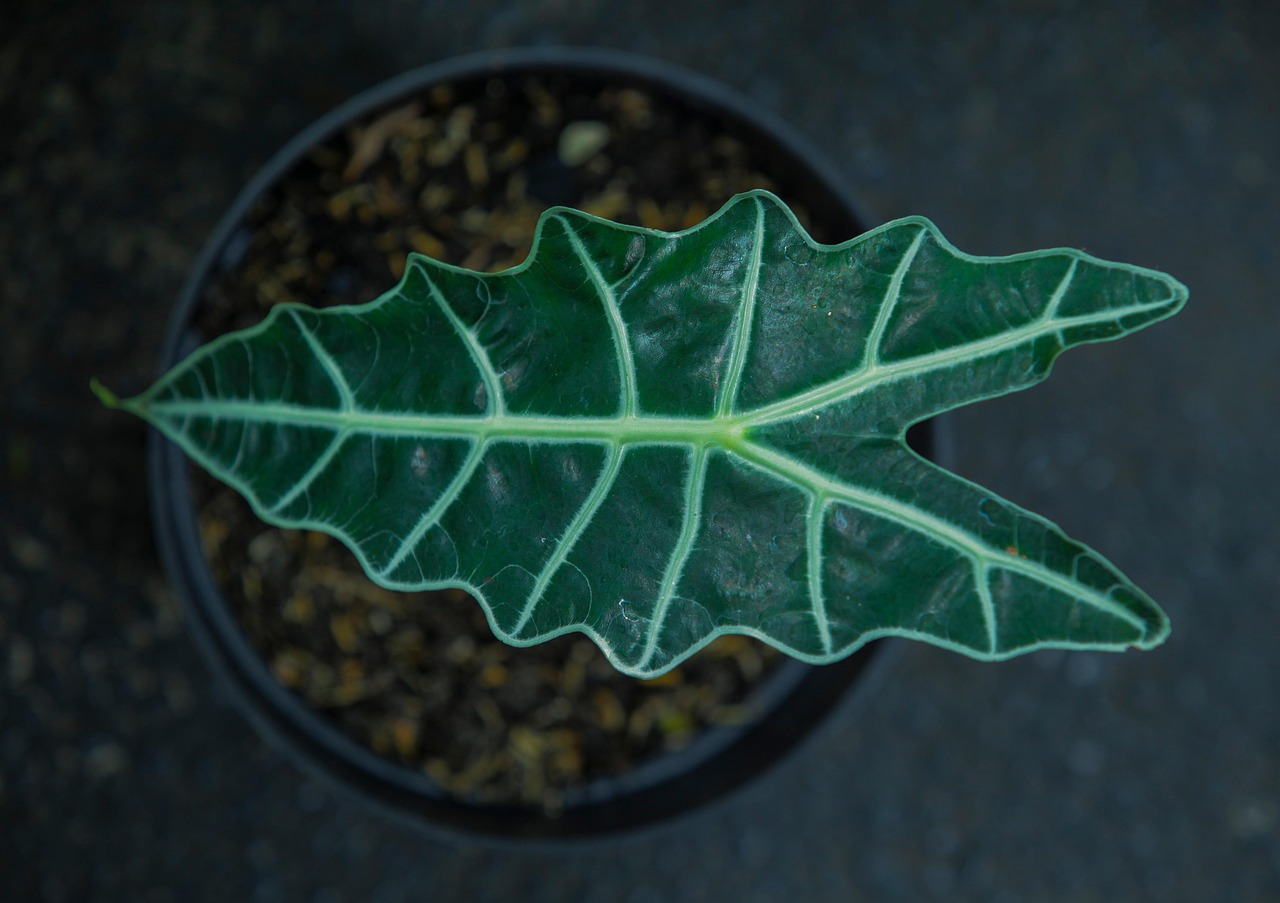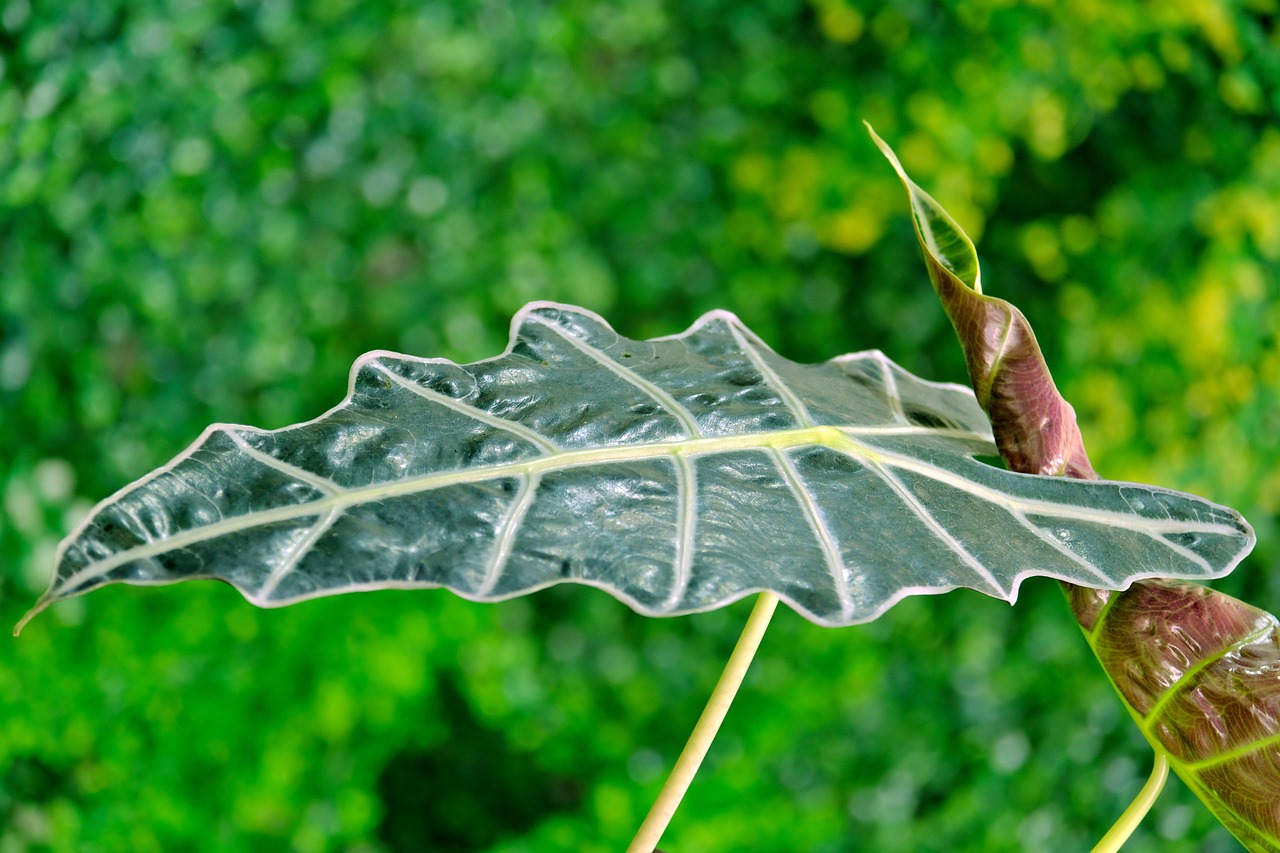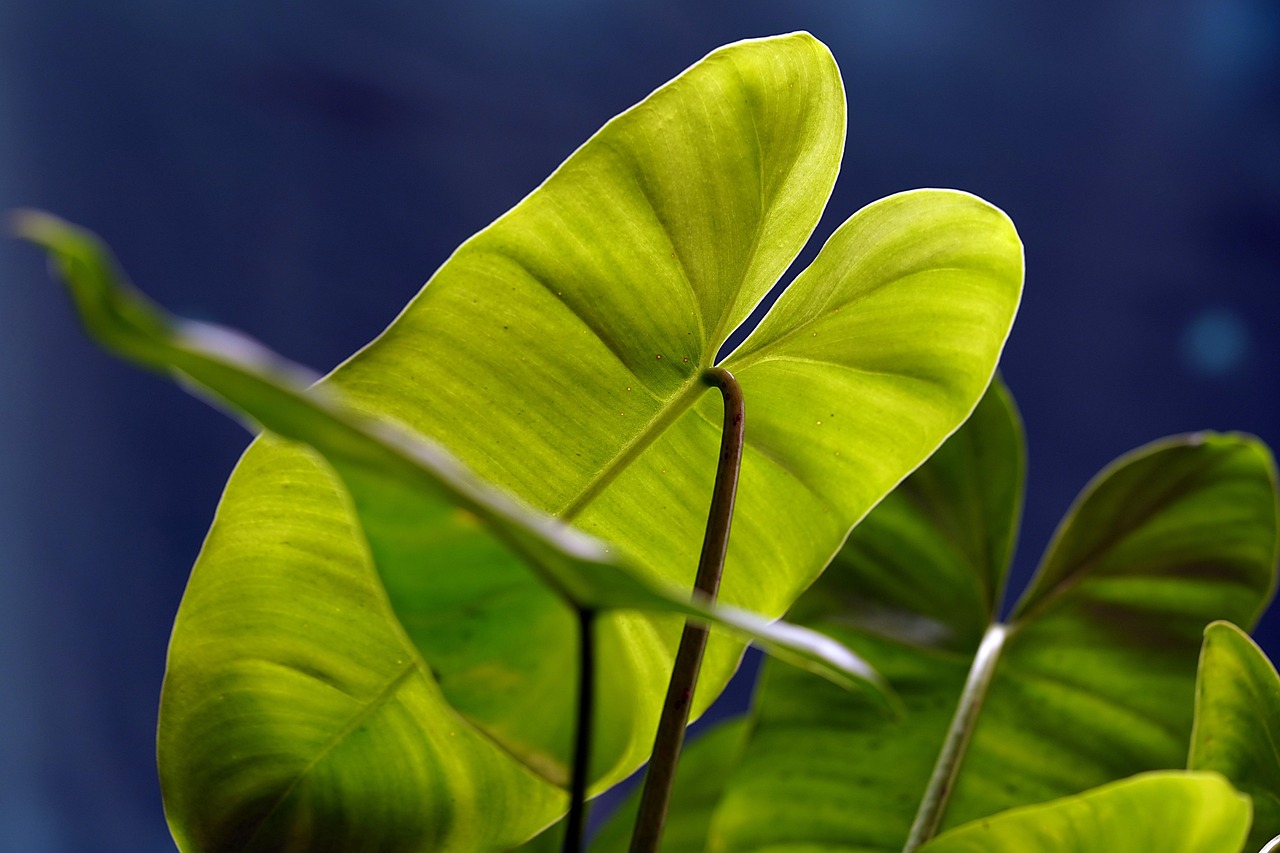To care for an Alocasia Polly, provide bright, indirect light, maintain high humidity, and water when the top inch of soil is dry. Fertilize during the growing season and ensure proper drainage to avoid root rot.
Understanding Alocasia Polly

Alocasia Polly, also known as African Mask Plant, is a striking houseplant that features arrow-shaped leaves with bold white veins. This tropical plant originates from Southeast Asia and is cherished for its unique foliage and architectural appearance. While it may seem exotic, it can thrive indoors with the right care. Learning how to care for Alocasia Polly is essential for beginner plant parents eager to add this beautiful specimen to their collection.
One of the first steps in caring for an Alocasia Polly is understanding its natural habitat. In the wild, it grows in humid, tropical environments where temperatures remain warm year-round. This means that replicating these conditions indoors is crucial for its health and growth. A few key factors contribute to successful Alocasia Polly care, including light requirements, humidity levels, and watering practices.
Light Requirements
Alocasia Polly thrives in bright, indirect light. Direct sunlight can scorch its leaves, while too little light will lead to leggy growth and poor leaf development. Placing the plant near a window with filtered light is ideal. If you notice the leaves turning yellow, it may be a sign of too much direct sunlight.
Best Lighting Conditions
- Bright, indirect sunlight: Ideal for healthy growth.
- Avoid direct sunlight: This can cause leaf burn.
- Supplement with grow lights: If natural light is insufficient.
Humidity and Temperature
Humidity plays a vital role in the well-being of Alocasia Polly. Being a tropical plant, it prefers environments with high humidity levels, ideally around 60% or higher. Low humidity can lead to browning leaf tips and poor growth. To increase humidity, consider using a humidifier or placing a tray of water with pebbles beneath the plant pot.
Temperature Preferences
Alocasia Polly does best in temperatures between 65°F and 80°F (18°C to 27°C). It’s important to keep the plant away from cold drafts or sudden temperature changes. Keeping it in a stable environment will help it flourish.
| Factor | Ideal Conditions |
|---|---|
| Light | Bright, indirect light |
| Humidity | 60% or higher |
| Temperature | 65°F to 80°F (18°C to 27°C) |
Watering Practices
Proper watering is crucial for maintaining the health of your Alocasia Polly. Overwatering can lead to root rot, while underwatering can cause the plant to wilt. The general rule of thumb is to allow the top inch of soil to dry out before watering again. During the growing season (spring and summer), you may need to water more frequently than in the dormant months (fall and winter).
Watering Tips
- Check soil moisture regularly.
- Use a pot with drainage holes.
- Avoid letting the plant sit in standing water.
By following these basic guidelines for light, humidity, temperature, and watering, beginner plant parents can create a nurturing environment for their Alocasia Polly. As you become more familiar with the plant’s needs, you will enjoy watching it thrive and grow beautiful leaves that enhance your indoor space.
Fertilizing Alocasia Polly
Fertilizing your Alocasia Polly is an essential aspect of its care. During the growing season, which typically runs from spring to early fall, the plant benefits from regular feeding. This helps to promote healthy growth and vibrant foliage. Choosing the right fertilizer and applying it correctly can make a significant difference in the plant’s overall health.
Choosing the Right Fertilizer
When selecting a fertilizer for your Alocasia Polly, look for a balanced, water-soluble fertilizer with equal parts of nitrogen, phosphorus, and potassium (N-P-K ratio). A ratio such as 20-20-20 or 10-10-10 is commonly recommended. Additionally, consider using a fertilizer that is specifically formulated for houseplants to ensure it meets the plant’s nutritional needs.
Application Frequency
- Fertilize every 4-6 weeks during the growing season.
- Reduce or stop fertilization during the dormant months (fall and winter).
- Always follow the instructions on the fertilizer package to avoid over-fertilization.
Repotting Alocasia Polly
As your Alocasia Polly grows, it may outgrow its pot. Repotting is essential to provide fresh soil and additional space for root development. It is generally recommended to repot every 1-2 years, or when you notice roots growing out of the drainage holes.
When to Repot
Look for these signs that indicate it’s time to repot your plant:
- Roots are visible through the drainage holes.
- The plant shows stunted growth despite proper care.
- Soil dries out very quickly after watering.
Steps to Repotting
- Choose a pot that is one size larger than the current one, ensuring it has drainage holes.
- Gently remove the plant from its pot, being careful not to damage the roots.
- Loosen any tightly bound roots and trim off any dead or rotting roots.
- Add fresh potting mix suitable for houseplants to the new pot.
- Place the plant in the center of the new pot and fill in with more potting mix.
- Water thoroughly after repotting to help settle the soil.
Pest Management
Pests can pose a threat to your Alocasia Polly, making it essential to monitor for any signs of infestations. Common pests that affect this plant include spider mites, aphids, and mealybugs. Early detection and treatment can help keep your plant healthy and thriving.
Identifying Pests
- Spider Mites: Look for fine webbing on leaves and yellow spots on foliage.
- Aphids: These tiny insects cluster on new growth and can cause leaf distortion.
- Mealybugs: White, cottony masses found in leaf axils or on stems.
Treatment Options
If you notice any pests, there are several treatment options available:
- Insecticidal Soap: Apply according to package directions for effective control.
- Neem Oil: A natural pesticide that can deter pests when sprayed on affected areas.
- Manual Removal: For small infestations, gently wipe pests off with a damp cloth or cotton swab.
Common Problems and Solutions
Even with proper care, Alocasia Polly can experience some issues. Being aware of common problems can help you address them promptly. Here are a few frequent challenges and their solutions:
Yellow Leaves
If you notice yellowing leaves, it may indicate overwatering or insufficient light. Check the soil moisture and adjust watering practices accordingly. Additionally, ensure that your plant is receiving adequate light.
Browning Leaf Tips
Browning leaf tips can result from low humidity levels. Increase humidity around your plant by using a humidifier or placing it on a pebble tray filled with water. Regular misting can also help but should be done carefully to avoid water accumulation on leaves.
Wilting Leaves
Wilting leaves often suggest underwatering. Check the soil moisture and water if needed. Ensure that water reaches the root zone without causing waterlogging. If overwatering is suspected, adjust your watering schedule accordingly.
By understanding these aspects of Alocasia Polly care, beginner plant parents can provide a nurturing environment that helps this beautiful plant thrive. With proper attention to fertilization, repotting, pest management, and troubleshooting common problems, you will enjoy all the benefits this stunning houseplant has to offer.
Propagation of Alocasia Polly
Propagation is an exciting way to expand your collection of Alocasia Polly or share this stunning plant with friends. There are several methods to propagate Alocasia Polly, with the most common being division. Understanding the propagation process can help ensure successful growth and development of new plants.
Methods of Propagation
The primary method for propagating Alocasia Polly is through division. This technique involves separating the plant into smaller sections, each with its own root system. Here’s how to do it:
Propagat

ion by Division
- Choose the Right Time: The best time to propagate is during the spring when the plant is actively growing.
- Prepare Your Tools: Gather a clean, sharp knife or garden shears, potting mix, and new pots for the divisions.
- Remove the Plant: Gently take the Alocasia Polly out of its pot, being careful not to damage the roots.
- Divide the Root Ball: Identify natural divisions in the root ball. Use your knife to separate them carefully, ensuring each section has roots and some leaves.
- Repot the Divisions: Place each division in a new pot filled with fresh potting mix. Water them lightly to help settle the soil.
Caring for Newly Propagated Plants
After propagating, it’s essential to provide proper care to help the new plants establish themselves:
- Keep Them Moist: Water lightly but consistently to keep the soil slightly moist without over-saturating.
- Provide Humidity: Increase humidity around the new plants using a humidity dome or by misting them regularly.
- Avoid Direct Sunlight: Place them in bright, indirect light until they show signs of new growth.
Toxicity and Safety Considerations
While Alocasia Polly is a beautiful addition to your home, it is important to note that it is considered toxic to pets and humans if ingested. The plant contains calcium oxalate crystals, which can cause irritation and discomfort.
Understanding Toxicity
- Symptoms of Ingestion: Symptoms may include mouth and throat irritation, swelling, or difficulty swallowing.
- Animal Safety: Keep Alocasia Polly out of reach of pets. If ingested, contact a veterinarian immediately.
- Child Safety: Ensure that children are aware not to touch or eat any part of the plant.
Handling Precautions
When handling Alocasia Polly, it is wise to take some precautions:
- Wear Gloves: Use gloves when handling the plant to avoid skin irritation.
- Wash Hands: Always wash your hands after touching the plant to prevent accidental ingestion.
Seasonal Care Adjustments
Caring for Alocasia Polly may require different practices depending on the season. Understanding these seasonal changes can help you keep your plant healthy throughout the year.
Spring and Summer Care
During the growing season, focus on promoting healthy growth:
- Increase Watering: Water more frequently as the plant actively grows during these months.
- Add Fertilizer: Fertilize every 4-6 weeks with a balanced fertilizer to support growth.
- Monitor for Pests: Check regularly for pests, as warmer weather can bring increased insect activity.
Fall and Winter Care
In the dormant months, adjust care to meet the plant’s decreased needs:
- Reduce Watering: Allow the top inch of soil to dry out before watering again, as growth slows down.
- Avoid Fertilizing: Hold off on fertilization until spring when growth resumes.
- Maintain Temperature: Keep the plant away from drafts and ensure it remains in a stable temperature range.
Finding the Right Location
The placement of your Alocasia Polly within your home can greatly impact its health and growth. Consider the following factors when choosing the best location for your plant:
Light Exposure
Select a spot that provides bright, indirect light. Too much direct sunlight can scorch its leaves, while too little light can result in poor growth.
Humidity Levels
A humid environment is ideal for Alocasia Polly. Bathrooms and kitchens can be great locations due to their naturally higher humidity levels. If these areas are not available, consider using a humidifier nearby to maintain moisture in the air.
Avoiding Drafts
Select a location away from cold drafts or heating vents, as sudden temperature changes can stress the plant. Keeping it in a stable environment will help it thrive and grow beautifully over time.
By understanding propagation techniques, toxicity considerations, seasonal care adjustments, and optimal placement options, beginner plant parents can ensure their Alocasia Polly remains a vibrant and healthy addition to their home for years to come.
Common Varieties of Alocasia
While Aloca

sia Polly is a popular choice among plant enthusiasts, there are several other varieties of Alocasia that you may find intriguing. Each species possesses unique characteristics and care requirements, allowing you to diversify your plant collection. Here are a few notable varieties:
Alocasia Zebrina
Known for its striking zebra-patterned stems, Alocasia Zebrina features large, glossy leaves that resemble those of Alocasia Polly. This variety enjoys similar care conditions, thriving in bright, indirect light and high humidity.
Alocasia Frydek
The Alocasia Frydek, also known as the Green Velvet Plant, has heart-shaped leaves with prominent white veins. It prefers warm temperatures and high humidity, similar to the care needs of Alocasia Polly.
Alocasia Amazonica
Often confused with Alocasia Polly, Alocasia Amazonica has similar leaf shapes but showcases a unique pattern. It thrives in bright, indirect light and requires consistent moisture to flourish.
Exploring different varieties can add depth to your plant collection and provide insights into varying care requirements. Each species offers beauty and diversity, allowing you to enjoy the fascinating world of Alocasia plants.
Maintaining Plant Health Year-Round
To keep your Alocasia Polly healthy throughout the year, consider implementing a few additional practices:
Regular Inspection
Make it a habit to inspect your plant regularly for signs of pests or diseases. Early detection can prevent minor issues from escalating into significant problems. Look for discoloration, wilting, or unusual growth patterns.
Proper Soil Maintenance
Using well-draining potting soil is crucial for the health of your Alocasia Polly. Consider repotting with fresh soil every couple of years to replenish nutrients and provide a healthy growing medium:
- Aeration: Ensure the soil remains aerated by mixing in perlite or orchid bark.
- Nutrient Boost: Use organic compost or slow-release fertilizers during repotting to enhance soil nutrients.
Caring Through Seasonal Changes
As mentioned previously, seasonal changes can affect your Alocasia Polly’s care routine. Be attentive to how the plant responds to these changes:
- Spring and Summer: Increase light exposure as days get longer and temperatures rise.
- Fall and Winter: Adjust watering schedules as the plant enters dormancy; reduce frequency but ensure the soil does not dry out completely.
Tools for Successful Plant Care
Having the

right tools can make caring for your Alocasia Polly much easier. Consider investing in the following items:
- Moisture Meter: Helps monitor soil moisture levels accurately.
- Pruning Shears: Essential for trimming dead leaves and maintaining plant shape.
- Humidity Gauge: Allows you to keep track of humidity levels in your home environment.
- Grow Lights: Useful for providing adequate light during darker months or in low-light environments.
Final Thoughts
Caring for an Alocasia Polly can be a rewarding experience for beginner plant parents. With its stunning foliage and unique growth habits, this plant can bring life to any space. By understanding its specific needs—such as light, humidity, watering practices, and pest management—you can create a nurturing environment that encourages healthy growth.
Remember to remain vigilant against pests and adjust your care routine according to seasonal changes. Additionally, exploring different varieties of Alocasia can expand your collection and deepen your appreciation for these beautiful plants. The right tools and practices will help you cultivate a thriving Alocasia Polly that adds beauty to your home for years to come.
Your journey as a plant parent can be filled with learning and joy. Embrace each step and enjoy watching your Alocasia Polly flourish under your care!
